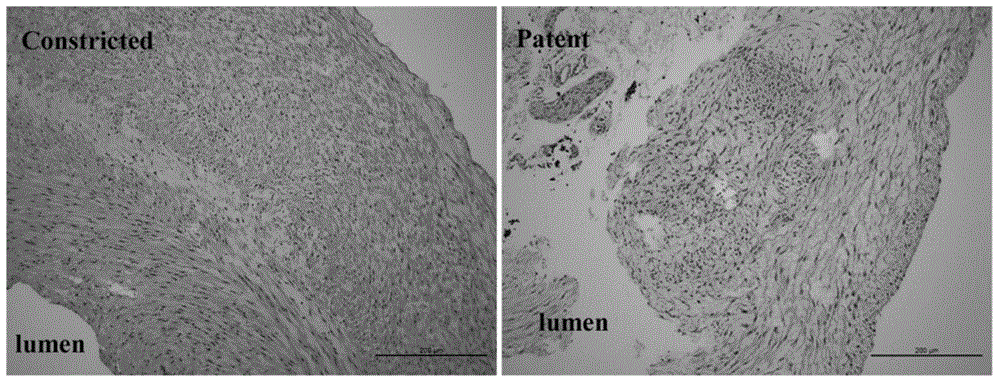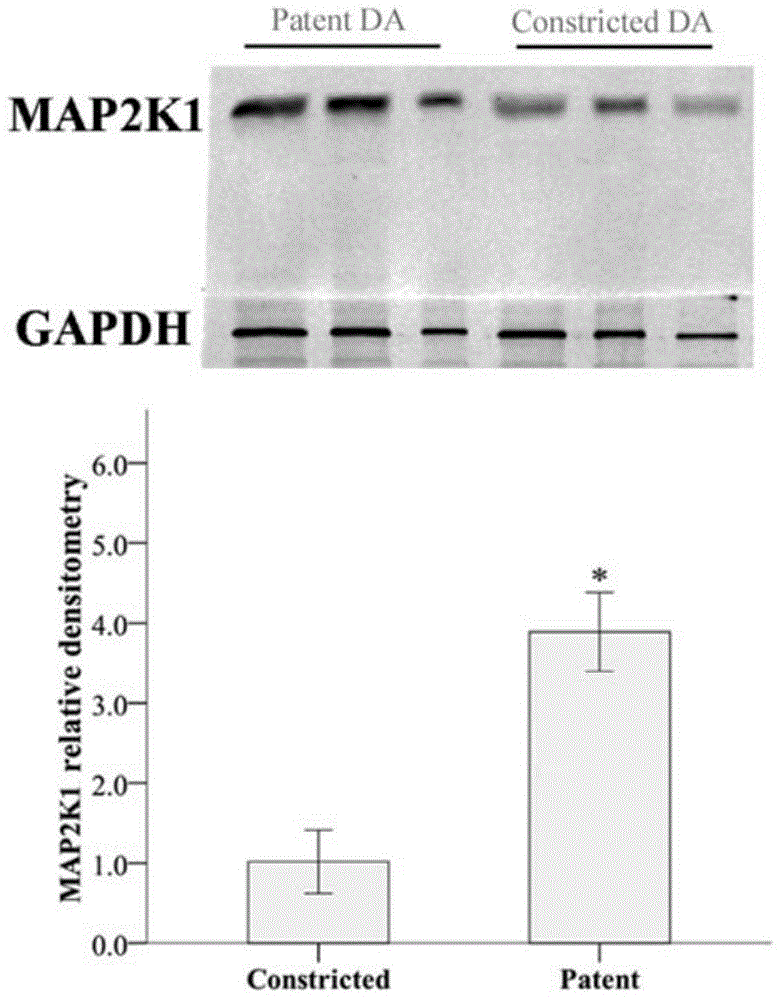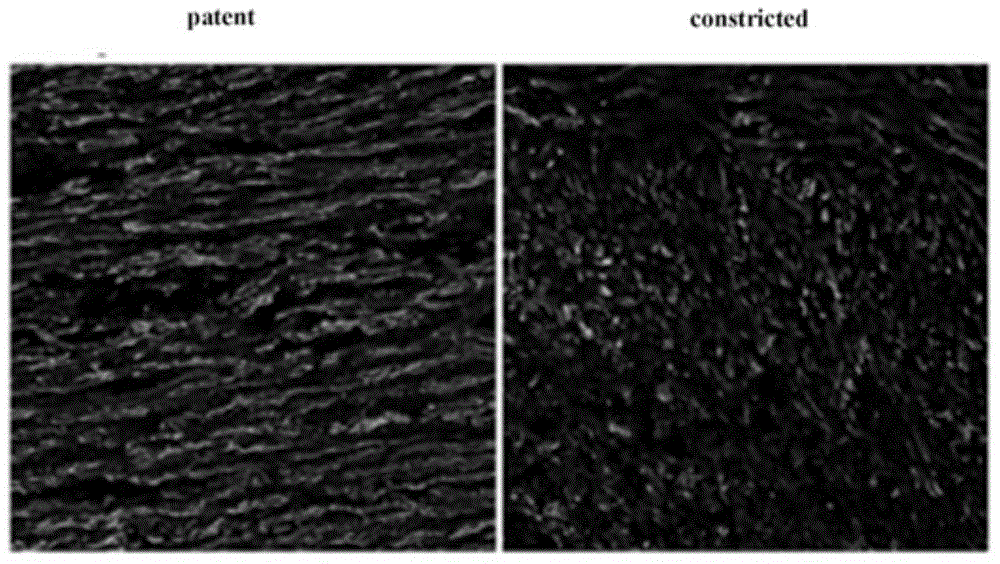MAP2K1 marker for diagnosing closing or opening of arterial ducts
A technology of patent ductus arteriosus and reagents, which is applied in the field of clinical diagnosis of molecular biology and medicine, and can solve problems that are generally completed within 10 to 15 hours after birth.
- Summary
- Abstract
- Description
- Claims
- Application Information
AI Technical Summary
Problems solved by technology
Method used
Image
Examples
Embodiment 1
[0023] 1. Materials and methods
[0024] 1.1 Isolation of human ductus arteriosus tissue
[0025] All steps and processes of this experiment were approved by the Ethics Committee of Shanghai Jiao Tong University School of Medicine. Open (n=10, age=30.2±6.3 days) or closed (n=10, age=25.3±7.9 days) ductus arteriosus tissues were obtained from children with ductus arteriosus-dependent congenital heart disease during surgery (patients with See Table 1 for details. All patients received prostaglandin E1 before surgery, but the ductus arteriosus in the closed group remained closed before surgery. The status of the ductus arteriosus (patent or closed) was confirmed by echocardiography and CT and confirmed during the procedure. All samples were washed with saline, divided into four parts, and quickly frozen in liquid nitrogen.
[0026] Table 1 Clinical information of children
[0027]
[0028] Note: *P<0.05 open group vs closed group; TGA / IVS: complete transposition of the gr...
Embodiment 2
[0060] 20 patients with suspected patent ductus arteriosus were diagnosed using the relative content of MAP2K1 protein as a marker. Adopt Western blotting to analyze, and specific method is the same as embodiment 1. The relative expression level of MAP2K1 = 3.00 (MAP2K1 / GAPDH) was used as the diagnostic cut-off value, which was judged as patent ductus arteriosus above the above cut-off value. The diagnostic results of MAP2K1 protein markers showed that 14 patients had patent ductus arteriosus. In the later stage, all 14 patients underwent ductus arteriosus closure surgery, and all 14 patients were confirmed to have patent ductus arteriosus during the operation. Five of the other six patients underwent further cardiac surgery, and it was confirmed that none of the five had a patent ductus arteriosus.
PUM
 Login to View More
Login to View More Abstract
Description
Claims
Application Information
 Login to View More
Login to View More - R&D
- Intellectual Property
- Life Sciences
- Materials
- Tech Scout
- Unparalleled Data Quality
- Higher Quality Content
- 60% Fewer Hallucinations
Browse by: Latest US Patents, China's latest patents, Technical Efficacy Thesaurus, Application Domain, Technology Topic, Popular Technical Reports.
© 2025 PatSnap. All rights reserved.Legal|Privacy policy|Modern Slavery Act Transparency Statement|Sitemap|About US| Contact US: help@patsnap.com



